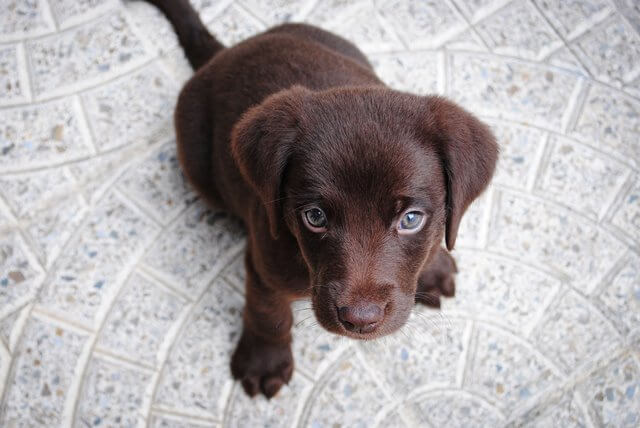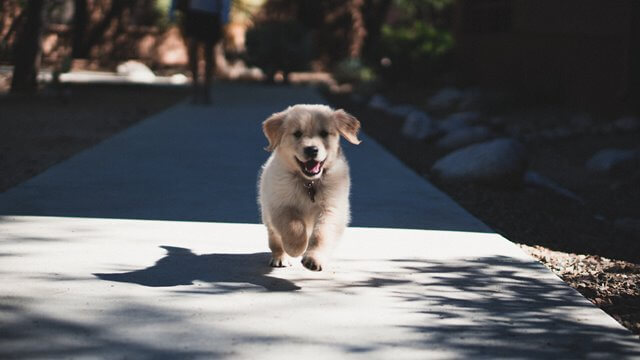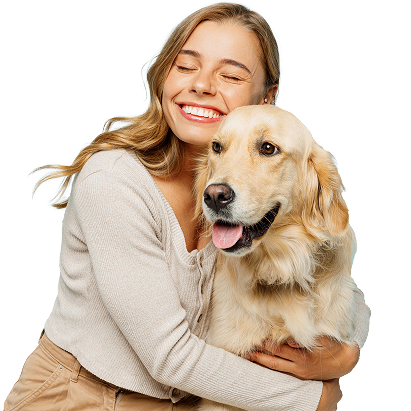How to toilet train your puppy
Toilet training, is often the part of bringing home a new puppy, or even new dog, that many people face with understandable trepidation, but by following these tips you will be able to help your new four-legged family member to learn the basics in no time at all. Note: If you are training an adult dog then […]
Toilet training, is often the part of bringing home a new puppy, or even new dog, that many people face with understandable trepidation, but by following these tips you will be able to help your new four-legged family member to learn the basics in no time at all.
Note: If you are training an adult dog then the following steps will be the same but the training is likely to take longer as they adjust to a new routine.
Toilet training basics
To start it’s recommended that you chose a specific outdoor area where you would like your new furry family member to go to the toilet – having a dedicated space can help provide routine and make the training a little more straightforward.
When you start toilet training your new puppy it’s extremely important to provide them with plenty of opportunities to go; puppies only have very small bladders and little control and so you should take them to their toilet spot every 30-60 minutes initially although you should be able to increase this interval as your puppy grows. Whilst, like us, dogs may need to toilet at any time of the day, there are also a few key times when dogs (especially puppies and young dogs) will almost certainly want to go:
- First thing in the morning- take your puppy out as soon as you get them up and stay with them until they have toileted, this will help reinforce the routine.
- Almost immediately following a meal – most dogs will need to poop soon after eating, so once they have finished their meal take them straight out to the toilet area and wait for them to go (it helps enforce the training if you stick to regular meal times with your puppy)
- During periods of exercise/excitable play – puppies will often be stimulated to need the toilet by the excitement which occurs during playtime so it’s a good idea to break up your periods of play with outdoor ‘toilet breaks’
Puppies, as with older dogs, also have some typical behaviours they exhibit when they need the loo such as pacing/looking restless, circling, sniffing the floor and, if toileting is imminent, they will start to squat – so keep an eye out for these behaviours between scheduled outdoor trips and if you notice them take your puppy outside straight away.

Steps for successful toilet training:
- Choose an outdoor spot as a ‘toilet area’ and try and take your puppy to the same spot each time.
- If you put your puppy out for a toilet break and they want to come straight back inside then try slowly and calmly walking around the area for a little while to encourage your puppy to sniff the ground and move about. If after 5-10 minutes they still haven’t toileted then bring them back inside and repeat the process at 10-minute intervals (during this time be sure to keep an eye out for the signs we previously mentioned showing they may be about to go!)
- Never leave your puppy alone in the toilet area as they will likely become distracted trying to get right back to you! Also, you will miss the moment they toilet and thus the opportunity to reward them and reinforce the training – if it’s raining have an umbrella handy for yourself and keep a pair of ‘easy to slip on’ shoes next to the door so you are never “caught short” when your puppy needs to go.
- Once your puppy starts to toilet you can introduce a command of your choice that your puppy will then associate with appropriate toilet behaviour (eg, ‘go toilet’ or ‘go potty’)
- As soon as your puppy toilets in the appropriate area provide them with lots of praise and reward either with treats or with playtime.
- If you notice your puppy about to toilet in the wrong area never punish them or ‘tell them off’, just calmly move them towards the specified area and praise them when they have toileted in the correct place.
- Try not to play with your puppy just before or during ‘toilet time’ as this will distract them but ensure that once they have successfully toileted, you spend a little playtime outdoors – this will help them realise that toilet time doesn’t end the fun time they can spend outdoors and will help prevent them from ‘holding it in’ to prolong their trip outside.
- If your puppy toilets in the house it is extremely important that you do not punish them or tell them off – this will only cause your puppy to associate toileting with fear and will confuse them. Instead calmly pick them up and take them straight to their toilet area then clean the area they have soiled with a biological washing solution that is pet (and fabric) safe (do not use any ammonia-based products as this will just encourage your puppy to use the same spot again!) and then rinse with warm water. If your dog is toileting frequently in the house it may be worth increasing the frequency of toilet breaks.
Using Puppy Pads
Although most of the toilet training will revolve around getting your new four-legged family member to toilet outside it is important to realise that most puppies (and untrained adult dogs) will not be able to hold it in over-night – one solution to this is to provide them with an area to toilet using puppy pads (or even newspaper). Puppies do not want to toilet in their sleeping area so place the pads away from their bed. In the morning, after you have taken them out for their first toilet break of the day, simply clean away the soiled pads (and clean any soiled regions).
If you live in a flat or only have access to public areas for toilet training your dog (areas where unvaccinated dogs may also be toileting) then you should not take your new puppy outside until they have completed their full vaccination course (they are usually allowed into public areas one to two weeks after completing vaccinations but get clarification on this from your vet as different vaccines may have different recommendations) – in these cases your designated toilet area will initially need to be one that is made of puppy pads/newspaper. All of the above steps will still apply for training your puppy to go to the toilet on the pads but once they are fully protected by their vaccines you can transition to outdoor training.

How long will toilet training take?
It may take several months to toilet train your new puppy/dog and there will likely be a few ‘accidents’ even after they appear to be fully trained – just continue to follow the above steps when accidents happen and remember to never punish your dog for toilet mishaps. It’s also recommended that even when your pup appears to be fully toilet trained that you continue accompanying them for several weeks (and praising/rewarding for appropriate toileting) as this will ensure you fully reinforce the training.
If your puppy/dog does not seem to be responding to training or seems to be excessively house soiling then it is advisable to speak to your veterinary surgeon to ensure that there are no underlying reasons for inappropriate toileting (e.g. anxiety, tummy troubles or urinary tract infections).
We hope that following these top tips will help to make the toilet training process easier for you and your puppy and will also help your bonding experience with your new furry family member.
 Pet Owner
Pet Owner 



